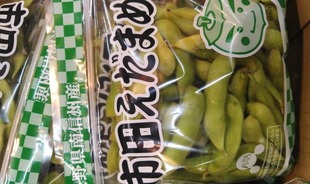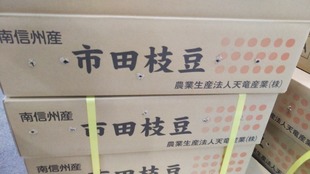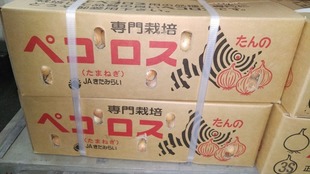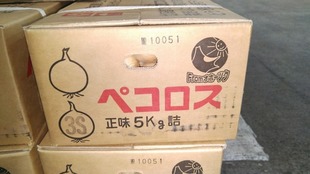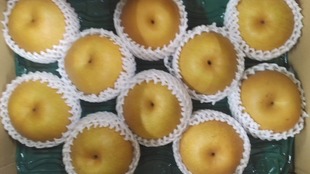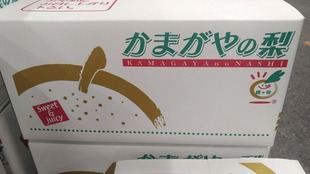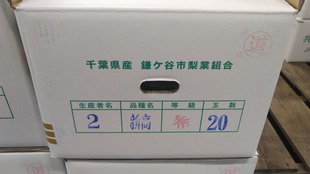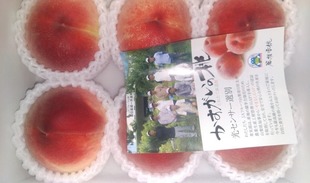【製品名(商品名)】
味良来(みらくる)
【種類】
Citrullus lanatus
【生産地】
茨城県筑西市, 桜川市(青葉会ユース 2002)
【名前の由来】
It was named because there was little difference in sugar content between the center and the area near the skin. The surname of the producer seems to be a variant of 水垣’s surname. Based in Nekoshima, Chikusei City, Ibaraki Prefecture. It was in the Edo period in Uchiyodo, Chikusei City, Ibaraki Prefecture. It is reported that he was engaged in agriculture there.
【主な特徴】
In the precincts of Enmeiji Temple in Isayama, Chikusei City, Ibaraki Prefecture, about 350 years old weeping cherry tree (designated classification, city designated cultural property (natural monument) designated date, August 23, 2018, location, Isayama, Chikusei City, grounds Manager, religious corporation Enmeiji (Shingon sect Buzan-ha), age, time 350 years old, size trunk circumference 3 meters, height 9 meters, number of members 1 share. Prunus subhirtella’s weeping cherry tree, one of the best in the city Boasting a large size. The trees are vigorous and seem to bloom splendid flowers from late March to early April. The cherry blossoms that bloom like the water flowing down from the waterfall extend about 13 meters east-west and about 18 meters north-south. It seems that it has a presence that overwhelms what you see, but for some reason there is something that you can understand) seems to have reached full bloom. Many visitors are gathering in the precincts to see the flowing cherry blossoms that look like a huge waterfall with flowing flowers. According to the temple, it started to bloom around March 19th, and it seems that the flowering progressed at once due to the temperature rise from 26th to 27th. Flowering is later than last year, but it seems to be about the same as usual. According to history, it is said that Fujiwara no HIDESATO built Isa Castle in 938-947 due to the turbulence of Taira no MASAKADO. In the Middle Ages, the clan Isa dominated the area around Chikusei City. In the Northern and Southern Dynasties, Mr. Isa, who was on the Southern Court side, was attacked by the Northern Court side, and there is a legend that he escaped to Oshu when the main castles, Daiho Castle and Seki Castle, fell. From 1478, Katsuuji MIZUNOYA((The year of birth is unknown, and it is said to be the son of Tokiuji Isenokami MIZUNOYA. During the Eikyo turbulence that occurred in 1437, he was given to the Kanto Koga Mochiuji ASHIKAGA together with his master, Mr. Yuki, and was defeated by the Shogunate army. Protected him until the end and killed him at Yuki Castle.)became the lord of the Shimodate and built the Shimodate Castle. Incorporating the idea of Feng Shui into the castle town, Dewasanzan (Tsuruoka City, Yamagata Prefecture) has five key points, including the demon gate, wind gate, sick gate, and Tenmon. Haguro Daigongen(It is watched as a god of Shinto and Buddhism based on the mountain worship and Shugendo of Mt. Haguro in Dewa Province. Based on the theory of Honji Suijaku, the Holy Kannon Bodhisattva was regarded as the Honji Suijaku god who appeared in the form of “Right” as the Honji Buddha.)was solicited and made a spiritual cornerstone. Mr. MIZUNOYA was working hard as a vassal of Mr. Yuki, but became independent, survived the Warring States period while being a small lord, and was relieved of 31,000 koku (later about 50,000 koku of rice) under the HIDEYOSHI administration and established the Shimodate domain. After that, Kiyokata UESUGI in the Kanto region searched for Tokiuji’s orphan in order to revive Mizunoya, and it is said that Katsuuji was found. He was given 12 Naganuma hometown and 33 Isa hometown for his efforts to revive the Yuki clan as a senior vassal. In 1478, he founded Yakushido, and in 1481, he invited Buddhist priest “良室榮欣” (priest of Yuki Jokokuji V). The temple name was changed to “Jorinji Temple(曹洞宗; 岡芹町)” after the opening of the mountain and Katsuuji(定林寺殿玉叟了圓大居士)-Ko. In 1481, it was protected as a successive Bodhisattva temple, and the Mizunoya family donated 150 koku of rice of the temple territory and built Dou. The bronze bell donated by KATSUTOSHI MIZUNOYA in 1567 (Muromachi period work, 4 cases of 4 steps of milk, total height 89 cm, diameter 49 cm) remains and was designated as an important cultural property designated by Ibaraki Prefecture in 1963. Many Dou, temple treasures, and records were destroyed by fire in 1880, but they were later rebuilt.)In the same year, the Haguro Daigongen of Dewasanzan (Tsuruoka City, Yamagata Prefecture) was solicited to establish the Kamihaguro Shrine and the Shimohaguro Shrine. When MIZUNOYA Family transferred to Bichu Nariwa in 1639, it seems that the feudal lord changed to Matsudaira, Masuyama, Inoue, and Kuroda in a relatively short period of time. When Fusashige ISHIKAWA-Ko became the feudal lord with 20,000 koku in 1732, the Ishikawa family celebrated the Meiji Restoration for nine consecutive generations. In addition, Shimodate, Chikusei City, which is a castle, has been economically developed as a post town on the Yuki Highway, where many supplies have been brought in and it has become a collection place for “cotton,” which is a special product. Shimodate City, Former Makabe District ; Sekijo Town, Akeno Town, and Kyowa Town merged to form March 28, 2005. It is located in the western part of the prefecture, about 70 km north of Tokyo, about 15 km east-west, about 20 km north-south, and has an area of 205.3 km2. Adjacent to Shimotsuma City and Tsukuba City, which includes Japan’s leading science and technology center city “Tsukuba”, to the east is Sakuragawa City, to the west is Yuki City, Yachiyo Town and Oyama City, Tochigi Prefecture, and to the north is Moka, Tochigi Prefecture. Adjacent to the city. The terrain is generally flat, and the Kinugawa and Kokaigawa rivers flow from north to south, forming a fertile countryside. The altitude is about 20 m to 60 m, and in the north there is a hilly area that connects to a part of the Abukuma mountain range, and the altitude is about 200 m. The climate is Pacific, mild and refreshing throughout the four seasons. As for the road system, National Road No. 50 is developed in the east-west direction and National Road No. 294 is developed in the north-south direction, and the intersection of these two lines becomes the center of the city. Furthermore, prefectural roads will be radiated from here to Ishioka City, Tsukuba City, and Koga City. The JR Mito Line runs from east to west, and the Moka Railway Moka Line runs from Shimodate Station to Toride in the south and Motegi(Not Motogi, Itako City, but different reading)in the north. Shimodate Gion Festival : One of the best summer festivals in Ibaraki prefecture, which is held over four days around Haguro Shrine and Shimodate Station. In addition to the 120-year-old Meiji portable shrine, the female portable shrine of the Aiden god, Tamayorihime, the Heisei portable shrine, which boasts the heaviest weight in Japan as a portable shrine carried every year, more than 30 children’s portable shrines will be handed over. In the early morning of the final day, the magnificent sight of “Kawatogyo; When the movement of the divine spirit itself is especially valued as a manifestation form of the divine power; Festival celebrating the (temporary) transfer of a shintai away from its main shrine(Of the shrine rituals, the festival that the spirit of the gods transfers to other places from the headquarters)” carrying the Meiji portable shrine into the river is brilliant. Hakojima manmade pond used to prevent flooding : Many photo enthusiasts and fans gather at “Diamond Tsukuba,” where the sun rises from the summit of Tsukuba, which is seen twice a year. It has become a hot topic as a popular spot that has been selected as the “Mt. Tsukuba Best Viewpoint”. あけのひまわりフェスティバル : It is famous as an event held in the Akeno area from late August to early September. Mainly on the “Tohoku Yae Sunflower”, which is covered with petals up to the seeds, a field of 1 million sunflowers over 4 ha spreads out.県指定文化財 : 建造物 : 羽黒神社本殿(附棟札1枚), 甲地内, 平成14年1月25日, 建造物 : 上羽黒神社本殿及び拝殿, 岡芹地内, 平成14年1月25日, 絵画 : 絹本著色八景の図, 中舘地内, 昭和37年10月24日, 絵画 : 絵馬(羽黒神社), 甲地内, 昭和38年8月23日, 絵画 : 絵馬(上羽黒神社), 岡芹地内, 昭和39年7月31日, 絵画 : 来迎の弥陀, 森添島地内, 昭和45年9月28日, 絵画 : 絹本著色両界曼荼羅図, 桑山地内, 昭和57年3月4日, 絵画 : 絹本著色毘沙門天像, 黒子地内, 平成28年1月21日, 絵画 : 絹本著色日吉山王本地仏曼荼羅図, 黒子地内, 平成29年1月26日, 彫刻 : 木造愛宕明神立像, 甲地内, 昭和38年8月23日, 彫刻 : 木造阿弥陀如来坐像 : 下星谷地内, 昭和57年3月4日, 彫刻 : 木造狛犬, 甲地内, 平成16年11月25日, 彫刻 : 銅造誕生釈迦仏立像, 小栗地内, 平成19年11月16日, 工芸品 : 螺鈿硯箱, 中舘地内, 昭和37年10月24日, 工芸品 : 銅鐘, 岡芹地内, 昭和38年8月23日, 工芸品 : 板碑, 岡芹地内, 昭和39年7月31日, 工芸品 : 大袖鎧, 丙地内, 昭和39年7月31日, 工芸品 : 石造五輪塔, 村田地内 : 昭和41年3月7日, 考古資料 : 板碑, 辻地内, 昭和50年6月25日, 無形民俗 : 小栗内外大神宮太々神楽, 小栗地内, 昭和41年3月7日, 史跡 : 船玉古墳, 船玉地内, 昭和8年7月4日, 史跡 : 伊佐城跡, 中舘地内, 昭和10年11月26日, 史跡 :久下田城跡, 樋口地内, 昭和15年9月4日, 史跡 : 板谷波山生家, 甲地内, 昭和40年5月21日.市指定文化財 : 建造物 : 観音寺本堂, 中舘地内, 昭和51年6月28日, 建造物 : 薬師堂本堂, 甲地内, 昭和51年6月28日, 建造物 : 雷神社(本殿/ 幣殿/ 拝殿)樋口地内, 昭和51年6月28日, 建造物 : 五所神社本殿, 五所宮地内, 昭和52年3月24日, 建造物 : 観音院本堂, 森添島地内, 昭和52年3月24日, 建造物 : 春日神社本殿, 嘉家佐和地内, 昭和52年3月24日, 建造物 : 田中稲荷神社本殿, 甲地内, 昭和52年3月24日, 建造物 : 不動堂, 岡芹地内, 昭和52年3月24日, 建造物 : 八幡神社本殿, 甲地内, 昭和52年3月24日, 建造物 : 小栗孫次郎平満重公と家臣の供養塔, 井出蛯沢地内, 昭和54年3月1日, 建造物 : 宝篋印塔, 蓬田地内, 昭和54年3月1日, 建造物 : 桑山神社本殿, 桑山地内, 昭和55年3月28日, 建造物 : 八幡神社本殿, 八幡地内 : 昭和55年3月28日, 建造物 : 東睿山千妙寺総本堂, 黒子地内, 昭和55年10月20日, 建造物 : 虚空蔵堂, 大谷地内, 昭和56年1月1日, 建造物 : 二所神社本殿, 成田地内, 昭和56年1月1日, 建造物 : 徳聖寺山門, 小栗地内, 昭和60年5月17日, 建造物 : 羽黒神社旧拝殿, 甲地内, 昭和61年6月26日, 建造物 : 最勝寺薬師堂(附棟札1枚), 下平塚地内, 平成14年3月20日, 建造物 : 宮山観音堂, 宮山地内, 平成14年11月15日, 建造物 : 五所神社石造鳥居, 五所宮地内, 平成29年11月17日, 絵画 : 漁夫図, 昭和51年6月28日, 絵画 : 寿三幅図, 昭和51年6月28日, 絵画 : 追羽子図, 昭和51年6月28日, 絵画 : 陶淵明山水図, 昭和51年6月28日, 絵画 : 東坡乗驢之図, 昭和51年6月28日, 絵画 : 文徴明八勝図模写, 昭和51年6月28日, 絵画, 大機院殿筆画, 中舘地内, 昭和51年6月28日, 絵画 : 水谷夫人妙西大姉画像, 乙地内, 昭和52年3月24日, 絵画 : 孝養太子四臣連座図, 宮後地内, 昭和57年2月25日, 絵画 : 絹本著色刀八毘沙門天星宿像, 黒子地内, 昭和59年3月19日, 絵画 : 絹本著色馬形護法童子像, 黒子地内, 昭和59年3月19日, 絵画 : 絹本著色護法童子像, 黒子地内, 昭和59年3月19日, 絵画 : 顕如上人御影, 宮後地内, 平成2年6月27日, 絵画 : 紙本著色仏涅槃図, 平成13年3月16日, 絵画 : 絹本著色釈迦三尊十六善神図, 平成15年2月26日, 彫刻 : 宮山観音堂本尊十一面観世音菩薩, 宮山地内, 昭和51年4月1日, 彫刻 : 月海山観喜院(廃寺)石仏, 岡芹地内, 昭和51年6月28日, 彫刻 : 木造阿弥陀如来坐像, 中舘地内, 昭和51年6月28日, 彫刻 : 青銅聖観世音菩薩立像, 甲地内, 昭和52年3月24日, 彫刻 : 木造薬師如来立像, 横塚地内, 昭和54年3月1日, 彫刻 : 聖観世音菩薩立像, 小栗地内, 昭和54年3月1日, 彫刻 : 木戸幸福寺仏像, 木戸地内, 昭和54年4月1日, 彫刻 : 銅造観世音菩薩立像, 昭和55年3月28日, 彫刻 : 木造阿弥陀如来坐像, 黒子地内, 昭和59年3月19日, 彫刻 : 木造薬師如来坐像, 小栗地内, 昭和60年5月17日, 彫刻 : 木造鬼子母神立像, 知行地内, 平成元年11月1日, 彫刻 : 木造十一面観音立像, 五所宮地内, 平成3年3月28日, 彫刻 : 木造天部形立像, 五所宮地内, 平成3年3月28日, 彫刻 : 木造薬師如来坐像, 下平塚地内, 平成14年3月20日, 彫刻 : 木造不動明王及び二童子立像, 岡芹地内, 平成15年8月21日, 彫刻 : 木造阿弥陀如来坐像, 関本上地内, 平成17年3月15日, 彫刻 : 木造不動明王立像, 関本下地内, 平成17年3月15日, 彫刻 : 木造聖観音立像, 小栗地内, 平成23年8月18日, 彫刻 : 木造十一面観音立像, 小栗地内, 平成23年8月18日, 工芸品 : 二峯庵額, 昭和51年6月28日, 工芸品 : 本小札紺糸縅胴丸, 昭和51年6月28日, 工芸品 : 陣羽織, 昭和51年6月28日, 工芸品 : 陣笠, 昭和51年6月28日, 工芸品 : 下館藩主石川家拝領打刀拵, 昭和52年3月24日, 工芸品 : 銀製定紋入手鏡, 甲地内, 昭和52年3月24日, 工芸品 : 銅五鈷杵, 黒子地内, 昭和58年4月15日, 工芸品 : 銅五鈷鈴, 黒子地内, 昭和58年4月15日, 工芸品 : 茅屋山水蒔絵硯箱, 黒子地内, 昭和59年3月19日, 工芸品 : 月海山観喜院医王寺(廃寺)不動堂厨子, 岡芹地内, 平成15年8月21日, 書跡 : 宇都宮歳旦帖, 昭和51年6月28日, 書跡 : 伊達左近中将吉村公筆軸一対, 中舘地内, 昭和51年6月28日, 書跡 : 吉村公筆和歌, 中舘地内, 昭和51年6月28日, 考古資料 : 鯨の化石, 明野公民館, 昭和51年4月1日, 考古資料 : 板碑, 小栗地内, 昭和58年4月22日, 考古資料 : 板碑, 関本中地内, 平成元年5月25日, 考古資料 : 五輪塔, 関本中地内, 平成元年5月25日, 考古資料 : 注口土器, 平成7年2月23日, 考古資料 : 高坏型土器, 野殿地内, 平成7年2月23日, 歴史資料 : 安倍晴明伝記版木/ 八幡稲荷権化帳伝記版木, 平成12年3月24日, 歴史資料 : “高札台, 関本分中地内, 平成14年2月25日”, 有形民俗 : 結縁交名帳(附阿弥陀如来1躯), 樋口地内, 昭和51年6月28日, 有形民俗 : 千人仏, 関舘地内, 昭和53年4月1日, 有形民俗 : 具足一揃, 昭和53年1月25日, 有形民俗 : 関流算額絵馬, 八幡地内, 昭和54年3月1日, 有形民俗 : 関流算額絵馬, 桑山地内, 昭和54年3月1日, 有形民俗 : 二宮尊徳仕法の水車と枡, 花田地内, 昭和54年10月1日, 無形民俗 : “太太神楽, 関本上地内”, 昭和50年4月24日, 無形民俗 : 常盤連(ひょっとこ), 松原地内, 昭和51年4月1日, 無形民俗 : 雷神社の湯立祭, 樋口地内, 昭和51年6月28日, 無形民俗 : 辻集落火渉, 辻地内, 昭和59年3月19日, 史跡 : 伊達行朝廟, 中舘地内, 昭和51年6月28日, 史跡 : 葦間山古墳, 徳持地内, 昭和51年6月28日, 史跡 : 加波山事件志士の墓, 乙地内, 昭和51年6月28日, 史跡 : 女方遺跡, 女方地内, 昭和51年6月28日, 史跡 : 女方古墳群(神明塚), 女方地内, 昭和51年6月28日, 史跡 : 下江連十二天遺跡, 下江連地内, 昭和51年6月28日, 史跡 : “水谷家歴代の墓”, 岡芹地内, 昭和51年6月28日, 史跡 : 下館城跡, 甲地内, 昭和51年6月28日, 史跡 : 野殿古墳, 野殿地内, 昭和51年6月28日, 史跡 : 藤原高房供養塔(等覚院供養塔), 泉地内, 昭和52年3月24日, 史跡 : 西方古墳, 西方地内, 昭和52年3月24日, 史跡 : 西方新畑古墳, 西方地内, 昭和52年3月24日, 史跡 : 薬師古墳, 甲地内, 昭和52年3月24日, 史跡 : 下館藩主石川総管の墓, 中舘地内, 昭和52年3月24日, 史跡 : 富士東古墳(浅間山), 中舘地内, 昭和52年3月24日, 史跡 : 富士東古墳(寺うしろ山), 中舘地内, 昭和52年3月24日, 史跡 : 佐藤英信の墓, 岡芹地内, 昭和52年3月24日, 史跡 : 台畑古墳, 村田地内, 昭和60年12月24日, 史跡 : 飯田軍蔵の墓所, 木戸地内, 平成12年7月25日, 天然記念物 : 観音寺 大欅, 中舘地内, 昭和52年3月24日, 天然記念物 : 薬師堂 大欅, 甲地内, 昭和52年3月24日, 天然記念物 : 関本神社の欅, 関本上地内, 昭和54年10月1日, 天然記念物 : 月海山観喜院医王寺(廃寺), 藪椿, 岡芹地内, 平成5年10月21日, 天然記念物 : 二所神社大榊, 成田地内, 平成5年10月21日, 天然記念物 : 八幡台大榎, 一本松地内, 平成11年3月24日, 天然記念物 : 市野辺大柳, 市野辺地内, 平成11年3月24日. Tsukubano, which is blessed with vast plains and water, is a treasure trove of fresh taste, where the blessings of the earth and the warmth of human hands come to fruition.As one of the best rice fields in the Kanto region, the vast plains at the foot of Mt. Tsukuba and several first-class rivers flow through the city. In addition, it is blessed with abundant land and water, and is famous as one of the leading rice fields in the prefecture. Its production and shipment are among the highest in the prefecture, and it is cultivated mainly in Koshihikari Rice. In addition, rice crackers using rice, brewed products, miso, soy sauce, etc. have been handed down to the present day, following the old-fashioned manufacturing method. Due to the recent natural orientation, it has become popular and has taken root in the streets. In addition, there are many long-established confectioneries loved by literati in the Shimodate district, which prospered as the center of commerce and culture in the area. The city is also widely known as a large production area for red pears, which boasts one of the largest acreages in Japan. Due to pesticide-reduced cultivation, strict fruit selection, and traditional cultivation techniques, its beauty is outstandingly designated as a brand production area in the prefecture. The main varieties are the popular varieties of “Kosui Pear” and “Hosui Pear” and the large “Nitaka Pear”, which are in season from summer to autumn. Recently, it is also focusing on the production of “Akizuki Pear” and “Keisui Pear: Ibaraki’s first original variety produced by the prefecture over 17 years. It is a hybrid of Shinsetsu and Chikusui pear, and has a sugar content of about 13 degrees, a strong sweetness, and a moderately refreshing acidity”. Ibaraki Prefecture has a history of pear cultivation since the Edo period and is one of the oldest pear producing areas in Japan. July 4th is “Nashi Pear Day”, pears in Ibaraki Prefecture start in July. Pear production is the second largest in Japan. The climate with a large temperature difference between day and night, abundant water, and blessed soil are suitable for pear cultivation. In the prefecture, it is produced mainly in Chikusei City, Shimotsuma City, Kasumigaura City, Ishioka City, and Yachiyo Town. The climate with a large temperature difference between day and night, abundant water, and blessed soil are suitable for pear cultivation. In the prefecture, it is produced mainly in Chikusei City, Shimotsuma City, Kasumigaura City, Ishioka City, and Yachiyo Town. From the beginning of July, starting with house pear (Kosui), which grows pears in a house that is rare in Japan, we will start with delicious pears while changing varieties such as “Shimotsuma Kanjuku pear”, Keisui, Hosui, Akizuki, Niitaka, and smile. You can enjoy it until around the time. Greenhouse-grown pears (Kosui) will be distributed from July, and the open field will be from early August to late August. A variety that marks the start of the pear season, with a light texture and plenty of juice. Since it has less acidity, it has a stronger sweetness. The crispy and refreshing texture seems to heal your mind. Shimotsuma Kanjuku Pear is from mid-August to late August. It is a rare ripe PEAR that is matured for 10 days or more than a normal pear and is harvested after determining when it is ready to eat. Keisui is from early September to late September. It is an original brand of Ibaraki, and because it is large, has a high sugar content, and has low acidity, you can feel a deep sweetness when you eat it. Hosui pear is from late August to late September. The flesh is soft, the juice is plentiful, the acidity is moderate, and the refreshing flavor that is not only sweet is felt, which is exciting. Akizuki pear is from early September to late September. A variety of three pears, Hosui pear, Niitaka pear, and Kosui pear, whose flesh is dense and sweet, with a refreshing and juicy texture. Niitaka pear is from late September to mid-October. Also known as the King of Pears, the larger ones weigh more than 1 kg. It has low acidity, is fresh, has a rich flavor, lasts a long time, and can be enjoyed for a long time. Smiles are from mid-October to late October. It is a variety that is a combination of Niitaka and Hosui. It is large and has plenty of juice, has a high sugar content, lasts for a long time, and is full of smiles. Chikusei City forms the largest pear producing area in the prefecture. The history of pear cultivation in the area is old, and cultivation began in 1857 in the former Sekijo Town and in 1860 in the former Shimodate City. Former Shimodate City was designated as a fruit and vegetable brand production area in the prefecture in 1985, and Sekijo Town was designated in 1991. As for the varieties, “Kosui” and “Hosui pear” account for almost 80-90%, and late-maturing “Akizuki pear” and “Niitaka pear” seem to account for the rest. The introduction of “Nikkori pear” as a new variety is progressing, and some new varieties such as “Keisui pear” are being cultivated. In addition to open-field cultivation, simple cover cultivation to protect from rain (1983-), unheated cover cultivation (1993-), and warm cultivation (1991-) have been introduced in some of the production areas to disperse labor. It is an effective means of expanding the cropping season. Since 2016, the city has been supporting Japanese agriculture by working on an agricultural product branding promotion project for the purpose of promoting agricultural products to the outside of the city, revitalizing the production area by increasing added value, and fostering attachment to local agricultural products. City and Aoba party Youth brand name “Mirakuru WATERMELON”, It’s blessed with climatic conditions, and the sunshine hours in January, which’s the planting season, are very long. In addition, the area where there’s little damage from typhoons. in sugar content about 4 degrees between the center and the skin. Himekansen No. 5 (Marutane Co., Ltd .: Headquarters, Shimokyo-ku, Kyoto City, Kyoto Prefecture, the flesh is as crisp as it is. It has a glossy skin. The flesh is thin, about 3 mm, and it has sufficient hardness and cannot be broken by a small amount. It is gaining popularity as a variety with significantly less watermelon cracking during transportation and physiological fruit cracking during growth. The small ball is in season in summer, but the seedling company responded to the voice of small ball watermelon in the summer when watermelon is the most delicious. The first fruit is harvested from April to mid-May, and then the second until June. It seems that there is a tendency to harvest fruits. It is surprising that the quality of the second fruit is the same as that of the first fruit. It has a strong crispness with a sugar content of 13 degrees or more and the taste is the best. It seems that there is almost no softening. Also, it is a variety mainly grown in greenhouse and large tunnels, and it seems to be suitable for August harvesting in open field cultivation and October-December harvesting in controlled cultivation. There are only two differences when measured during trial climate, and it’s a variety that can be eaten deliciously even near the skin. Kansen WATERMELON (large ball) From the beginning, the grass is strong, the leaves are rather large, the vines are thick, and it seems that the outbreak of watermelons often occurs all at once. The expression of female flowers in the low temperature period is good, the pollen power is strong, the fruit set in the forward cultivation is easy, stable harvest can be expected, and it seems to be a cultivar with strong disease resistance. The fruits show a clear and thick 1-row group on a dark green area, and the high-waisted view gives a strong and voluminous impression. It has strong transportability, and although it is a fast-growing type, it is a large ball with an average of 6 kg, and it seems that the deformed fruit is extremely small and the excellent product rate is high. The flesh is bright red, the fiber is very fine, the flesh is dense and crispy, the sugar content is 12 degrees or more, the stable period of the flesh is long as an early-maturing species, the store is good, and the taste is good. In addition, it is a variety that has little deterioration in meat quality and taste even when cultivated on a squash stand. Suitable for advanced cultivation of green house and large tunnel cultivation, it is said that it is about 48 to 52 days after flowering in May harvest, 42 to 45 days after flowering in June harvest, and 35 to 40 days after flowering in July harvest.

In Ibaraki prefecture, it is produced in large quantities around Chikusei City and Sakuragawa City, and it seems that it has a history of about 60 years as a production area. It is an area where the night temperature is low in winter and it is easy to spend long hours of sunshine during the day, and it is suitable for squid cultivation, and the production of small ball squid is the highest in the country. Every year, shipments begin around March, and the peak of shipments is reached from May to June. The skin is thin, the texture is crunchy, the taste is rich and the sugar content is high at 12 to 14 degrees, and the sweetness to the edge of the skin is the reason why it is called repeaters.

The Small ball watermelon is not a small one of the Large ball watermelon, but a new variety of watermelon that was born through the accumulation of breeding and the introduction of biotechnology. One of the reasons for its popularity is that it can be eaten deliciously up to the skin and that it is reasonably sized to fit in the refrigerator. An excellent living environment for watermelon is a germination temperature of 25 to 30 ° C. The practical minimum germination temperature is about 15 ℃, and the maximum germination temperature seems to be 40 ℃. It seems that the optimum temperature for growth is around 25 ℃. Since it is a high-temperature crop among melons, it is resistant to high temperatures, and although it depends on the variety and soil conditions, it seems that it can withstand a maximum temperature of 40 ° C. However, it is vulnerable to low temperatures, and when the minimum temperature drops below 13 ° C, it grows extremely poorly and the fruits may crack.

At the Gogyo River, which is near the excellent watermelon producing area, it seems that you can see the shadow of the fish running up and the state of spawning up close from the riverbank. The Kinugawa River is sponsored by the Kinu Kokai Fishery Cooperative (Ozakata, Chikusei City) and holds salmon catching, egg collection tours, and salmon fry release events. The season and time when salmon run up to the river flowing through Chikusei City for spawning is from late October to early December, and the peak seems to be mid-November every year. There are many species of salmonids in the world at present, and it seems that there are 68 species. Oncorhynchus keta, Chum salmon, Oncorhynchus nerkaSockeye salmon, Oncorhynchus kawamurae Black kokanee, Oncorhynchus kisutch, Coho salmon, Oncorhynchus gorbuscha Pink salmon, Oncorhynchus masou, Masu salmon, Oncors tshawytscha, Chinook salmon, King salmon, Oncorhynchus mykiss Rainbow trout, Steelhead trout, Salmo salar Atlantic. Salmon are pink but white. The pink color is carotenoid C40H52O4 (discovered by Richard Kuhn et al. He is a biochemist in Austria and Germany and a winner of the 1938 Nobel Prize in Chemistry), which has many antioxidant pigments. It seems that it is because it feeds on the krill that it contains.
